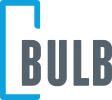
6 Strategies for CX Success
Good customer experiences are something that virtually every company strives for today.
After all, we know that customers aren’t just looking for great prices or exceptional features when making purchasing decisions, they’re also looking for amazing experiences. In fact, 73% of consumers say CX is a critical factor in purchasing decisions.
While customer experience may be the ultimate battleground for modern businesses, there is no universal definition of what a “good customer experience” should look like.
Virtually every company has its own idea of the perfect customer experience. Some focus on speed, others on the power of empathy, and so on.
So how do you define a good customer experience, and more importantly, how do you craft it?
What is a Good Customer Experience?
According to Gartner, 81% of companies compete with other organizations based solely on their customer service initiatives. To win in this environment, companies must have at least a basic understanding of a “good customer experience” is.
Simply put, a good customer experience isn’t necessarily about providing support faster than the competition or offering a wider choice of communication channels. Rather, it’s about consistently meeting and often exceeding your customers’ expectations.
In other words, a good customer experience is subjective. It depends entirely on what your customers expect most from you. This means that defining what “good CX” should look like in your business starts with one simple thing: you need to get to know your audience.
Gathering insights about your customers’ sentiment, CSAT scores, NPS ratings, etc. will help you define where you should focus your efforts.
How to Deliver Good Customer Experiences
While the exact nature of an excellent experience can vary from company to company, there are some core components that virtually every customer associates with a good experience. If you want to ensure you’re competitive in the CX landscape, your strategy should revolve around these points:
- Convenience
- Speed
- Efficiency
- Proactivity
- Personalization
- Empowerment
Now let’s look at some ways you can integrate each of these components into your CX strategy.
1. Provide Convenience with Omnichannel Service
Every customer, whether a B2C customer or a B2B customer, wants their interaction with businesses to be convenient. There are a few ways you can eliminate customer service friction with the right CX software, but the easiest way is to meet your customers where they’re and provide support through their preferred channels.
When customers spend most of their time interacting with brands on social media, they don’t want to have to find a phone number and contact a call center to get help; they want to be able to message you on the same channels they use to read news about your company and chat with their friends.
Find out where your customers are most likely to connect with businesses and make sure you’re able to offer support on those platforms. Most importantly, give your customers the ability to move between channels without having to start over.
A true omnichannel customer service strategy allows you to provide a consistent, contextual experience as your customer moves from one platform to the next by ensuring that every agent has access to consistent information about the customer journey.
2. Speed Service with Better Processes
Speed has long been a critical factor in good customer service. Whether your customers are buying a product or trying to solve a problem, they want a quick response. In recent years, the need for speed has only increased thanks to the rise of real-time chat tools, same-day delivery, and other speed-oriented service solutions. That means you need to be faster than ever.
The good news is that there are several ways to increase your speed by streamlining your CX processes. Start by training your employees and giving them the knowledge they need to solve problems quickly. Every employee should fully understand your products and services and have access to the tools they need to find information quickly. Virtual assistants and chatbots are great for giving agents faster access to information. You can also use automation technology to increase speed.
Automating processes like call routing and data entry means customers can get to the right agent faster, and agents can move between calls more quickly without having to complete the process faster.

3. Give Agents the Right Tools to Boost Efficiency
Good customer experiences and good employee experiences are inextricably linked. You can’t have one without the other. According to one report, companies with the most engaged employees also have 81% higher customer satisfaction.
To keep your employees happy, you need to give them the tools they need to do their jobs effectively. Start by creating a unified workspace where employees can access all the tools and information, they need to serve customers in one convenient environment. That way, they spend less time switching back and forth between different applications. Improve workflow by automatically routing customers to the agents with the right skills to resolve their issues and eliminate repetitive tasks.
It’s also helpful to ensure that your agents can work collaboratively on customer issues. When you connect customer experience tools and software with collaboration apps, your agents can easily share ideas and transfer calls without requiring extra effort from the customer.
4. Use Insights to Become Proactive
A study by Gartner shows that companies need to become more proactive and less reactive to compete in today’s customer service landscape. Good customer service means responding to customers’ needs as they arise, but great service starts with being ahead of the curve.
While no company can predict the future, you can use analytics, reporting, and business insights to effectively improve the way you respond to customers’ needs. With the right real-time and historical reporting tools, you can track customer service trends to identify your customers’ most common problems and find ways to solve them.
You can also use customer data to recommend products to your customers that meet their needs, provide insights into when subscriptions expire, and more. With the right tools, you can even proactively monitor technology remotely and fix problems automatically.
5. Leverage AI for Personalization
Today’s customers not only want their experience to be fast and efficient, but they also want it to be tailored to their specific needs. When you tailor customer service to your customer’s needs, you lay the foundation for better relationships, stronger loyalty, and higher retention.
The good news is that you probably already have the tools you need to provide a more customized service. Some 83% of customers say they’re willing to share data with companies if they believe it’ll lead to a better customer experience. Using the data, you collect with your contact center and CRM technologies, you can tailor your services to each customer.
With automated screen pops built into CCaaS tools, companies can even give their agents insights into a customer’s preferences, past purchases, and needs before they even pick up the phone or respond to a chat message. Just be sure to protect the data you’ll use for personalization because data breaches can be devastating to a company’s reputation.
6. Empower Customers with Self Service
Finally, it should be remembered that today’s consumers don’t necessarily need an agent to handle all their requests for them. Many consumers are perfectly capable of solving their problems themselves, provided they have the right resources at their disposal. With this in mind, it’s worth investing some time in developing the right self-service strategy.
You can start with simple solutions, such as the FAQ pages on your website. Or you can develop chatbots and virtual assistants that are able to recognize human speech and respond to individual customer requests. The best self-service solutions make it easy for customers to solve their own problems without human intervention.
These tools can also make it easier for agents to provide a better level of service when a call is transferred to them. A bot or virtual agent can relay information from previous self-service interactions to an agent, so the customer doesn’t have to explain their problem again. Used properly, these tools can’t only improve customer satisfaction, but also increase business productivity.
Achieve Amazing Customer Experience
The reality is that there is no single definition of a “good customer experience. Different customers place different importance on all the above factors. However, investing in these elements should ensure that you can provide at least the level of support your customers expect.
As you continue to gather data about your audience and monitor the evolving market, you can optimize your CX strategies based on what you learn about your own customers.
Of course, it all starts with access to the right tools. Bulb Tech’s Cempresso suite is an all-in-one customer experience solution that combines all the above to give you a much-needed CX boost. Contact Bulb Tech today to learn more about how we can help you redefine amazing customer experiences.
Are you ready for transition to digital?
Contact us and deflect 25% of calls to digital customer service



